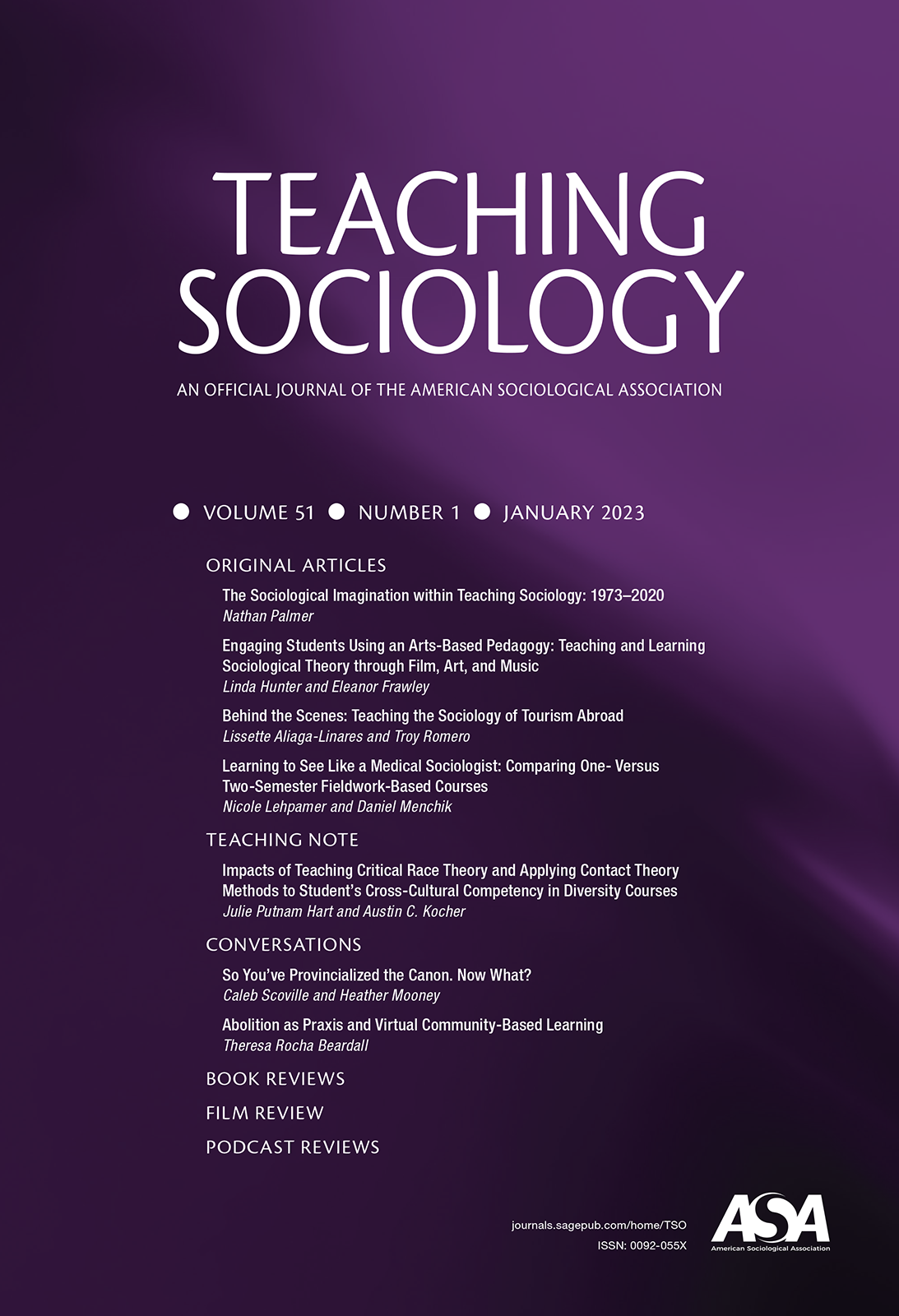
Society and Mental Health
Official journal of the ASA Section on the Sociology of Mental Health
Society and Mental Health (SMH) publishes original and innovative peer-reviewed research and theory articles that link social structure and sociocultural processes with mental health and illness in society. It will also provide an outlet for sociologically relevant research and theory articles that are produced in other disciplines and subfields concerned with issues related to mental health and illness. The aim of the journal is to advance knowledge in the sociology of mental health and illness by publishing the leading work that highlights the unique perspectives and contributions that sociological research and theory can make to our understanding of mental health and illness in society.
Submit your manuscript today at https://mc.manuscriptcentral.com/smh.
The American Sociological Association (ASA), founded in 1905, is a non-profit membership association dedicated to advancing sociology as a scientific discipline and profession serving the public good. With 12,000 members, ASA encompasses sociologists who are faculty members at colleges and universities, researchers, practitioners, and students. About 20 percent of the members work in government, business, or non-profit organizations. ASA hosts an annual meeting with more than 6,000 participants and publishes 14 professional journals and magazines.
As the national organization for sociologists, ASA, through its Executive Office, is well positioned to provide a unique set of services to its members and to promote the vitality, visibility, and diversity of the discipline. Working at the national and international levels, ASA aims to articulate policy and implement programs likely to have the broadest possible impact for sociology now and in the future.
 |
 |
 |
 |
 |
 |
 |
 |
 |
 |
 |
 |
 |
Society and Mental Health (SMH) publishes original and innovative peer-reviewed research and theory articles that link social structure and sociocultural processes with mental health and illness in society. It will also provide an outlet for sociologically relevant research and theory articles that are produced in other disciplines and subfields concerned with issues related to mental health and illness. The aim of the journal is to advance knowledge in the sociology of mental health and illness by publishing the leading work that highlights the unique perspectives and contributions that sociological research and theory can make to our understanding of mental health and illness in society.
| Alex E. Bierman | University of Calgary |
| Scott Schieman | University of Toronto |
| Robyn Lewis Brown | University of Kentucky |
| Christy LaShaun Erving | The University of Texas at Austin |
| Stephani Hatch | King's College, London |
| Jong Hyun Jung | Sungkyunkwan University, Seoul, South Korea |
| John Taylor | Florida State University, USA |
| Matthew Andersson | Baylor University |
| Anthony Richard Bardo | University of Kentucky |
| Gabriele Ciciurkaite | Utah State University |
| Max Elliott Coleman | University of Utah |
| Molly Copeland | University of Notre Dame |
| Patricia Drentea | The University of Alabama at Birmingham, USA |
| Christina Falci | University of Nebraska-Lincoln, USA |
| Elizabeth Felix | University of Kansas |
| Mathew D. Gayman | Georgia State University |
| Matthew K. Grace | Hamilton College, USA |
| Brittany N. Hearne | Vanderbilt University, USA |
| Jason Houle | Dartmouth College |
| Ning Hsieh | Michigan State University |
| Michael Hughes | Virginia Polytechnic Institute and State University, USA |
| Lei Jin | Chinese University of Hong Kong |
| Fabrice Stanley Julien | University of North Carolina-Asheville |
| Jinho Kim | Korea University |
| Soyoung Kwon | University of Texas-Dallas |
| Ashleigh E. Kysar-Moon | University of Northern Iowa |
| Jack Lam | University of Queensland |
| Patricia Louie | University of Washington |
| Fred E. Markowitz | Northern Illinois University |
| Michael McFarland | Florida State University |
| Byron Miller | University of South Florida |
| Uchechi A. Mitchell | University of Illinois-Chicago |
| Krysia N. Mossakowski | University of Hawaii-Manoa |
| Dawne M. Mouzon | Rutgers University-New Brunswick |
| Anna S. Mueller | University of Chicago |
| Atsushi Narisada | Saint Mary's University, Canada |
| Harvey Louis Nicholson, Jr | University of Toronto |
| Kei Nomaguchi | Bowling Green State University |
| Margaret Joan Penning | University of Victoria |
| Richard J. Petts | Ball State University |
| Fernando Rivera | University of Central Florida |
| Rachel M. Schmitz | Oklahoma State University |
| Sherrill L. Sellers | Miami University-Ohio |
| Karen A. Snedker | Seattle Pacific University, USA |
| Lijun Song | Vanderbilt University, USA |
| Lisa A. Strohschein | University of Alberta |
| Patricia A. Thomas | Purdue University |
| Courtney S. Thomas Tobin | University of California-Los Angeles |
| Elizabeth Vaquera | George Washington University |
| Alice P. Villatoro | Santa Clara University |
| Xiaozhao Y. Yang | Sun Yat-sen University, China |
Manuscript submission guidelines can be accessed on Sage Journals.